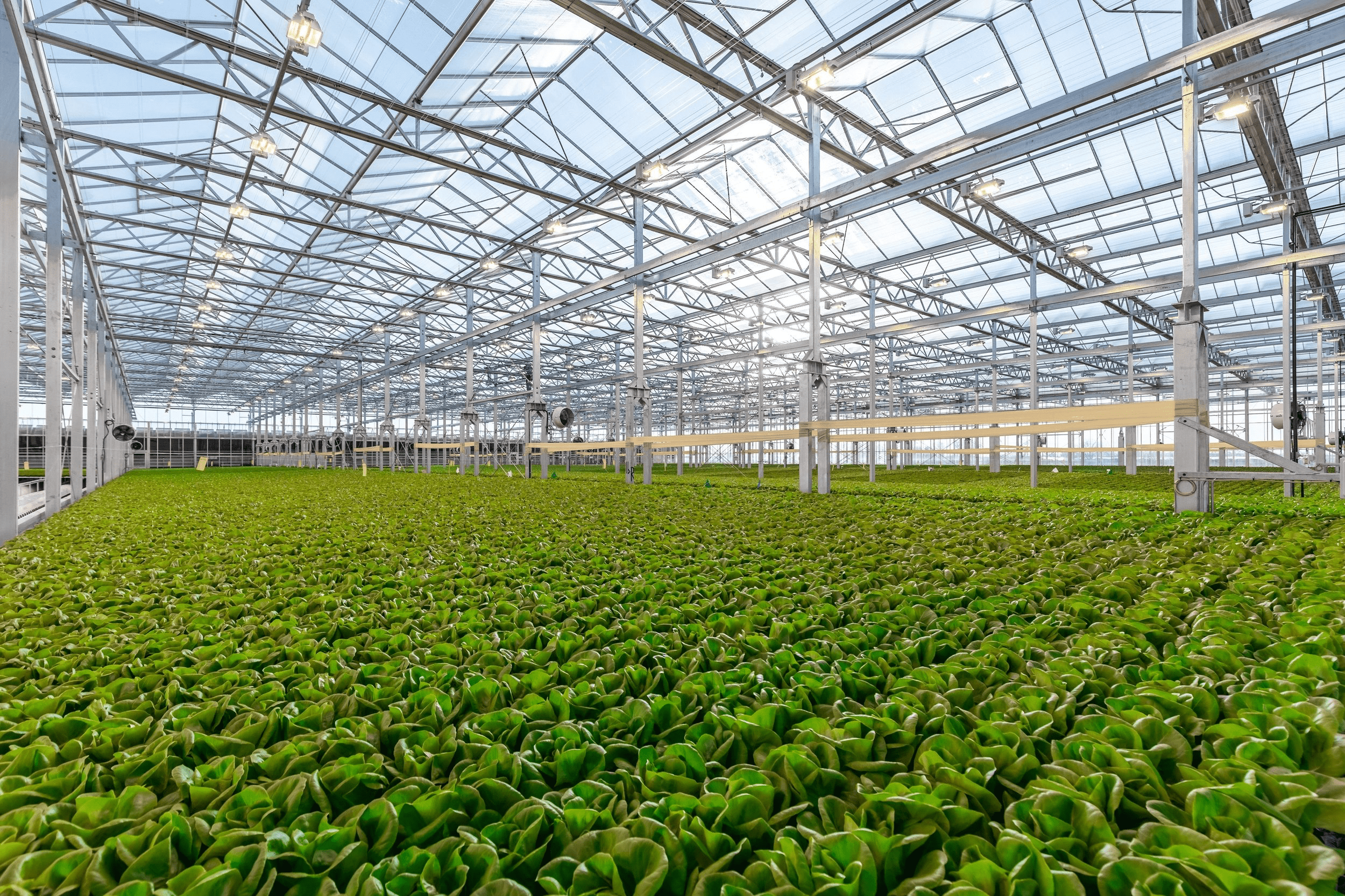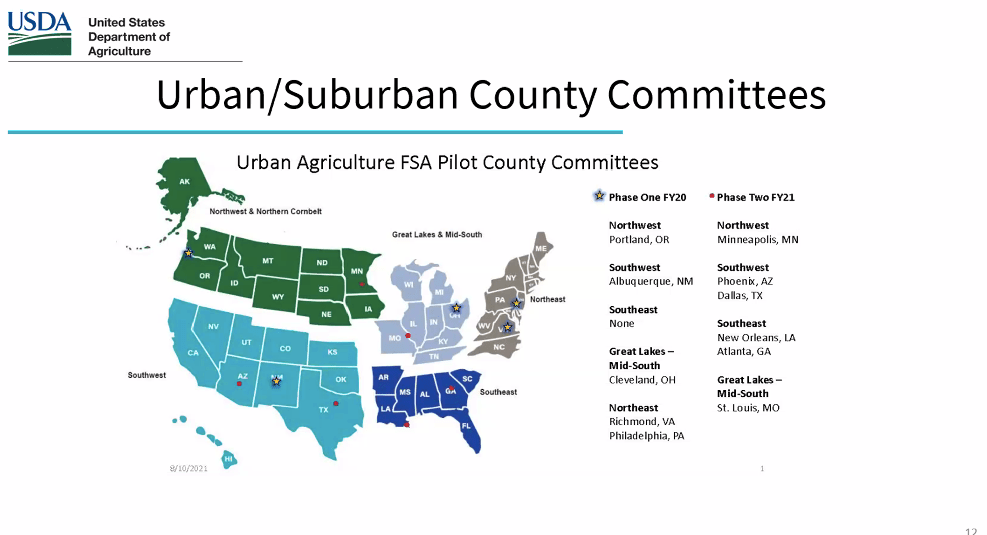May 10, 2022
5 Focus Points For The USDA's New Office Of Urban Agriculture

Gotham Greens’ Co-Founder & CEO Viraj Puri established this agricultural company in 2009 to revitalize communities and innovate for a sustainable future by creating new ways to farm and produce local food. Viraj Puri is part of the USDA’s inaugural federal advisory committee on Urban Agriculture. Image sourced from Gotham Greens.
Editor's Note: This article is based on presentations given during the March 2022 inaugural meeting of the USDA’s Office of Urban Agriculture and Innovative Production (OUAIP), and Agritecture’s subsequent correspondences with USDA officials.
Written by: Director of Business Development, Jeffrey Landau & Food Systems Consultant, Christian Kanlian
People have always grown food near where they live, and with over 80% of Americans now living in urban areas, everything from rooftops, warehouses, windowsills, and abandoned lots is transforming into farms.
The USDA is responding.
The USDA’s new Office of Urban Agriculture and Innovative Production (OUAIP), first authorized in the 2018 Farm Bill, held its inaugural public meeting in March 2022. Featuring USDA leadership, an advisory committee of industry leaders, and comments from the general public, the meeting served as an activation event to align the USDA with the growing Urban Agriculture movement.

Urban agriculture history slide presented during the inaugural public meeting, March 2022.
During his opening remarks, the Secretary of Agriculture, Thomas Vilsack, said there was a “keen interest and deep appreciation” for urban agriculture throughout the agency. Others spoke about the long history of urban gardens and farms in the U.S., especially during times of upheaval or conflict.
Leslie Glover, Program Manager for OUAIP, made the case that urban life and food production have only recently become disconnected, citing examples of widespread production during the World Wars and historic economic woes. He argued that urban and innovative production was here to stay and that it was up to the USDA to transition along with it.
The move is a shift for the USDA, which has historically omitted urban agriculture from many of its policies and programs, like important tax incentives, technical support, and financial support.
Recent funding announcements for climate-smart commodities and domestic fertilizer production have dwarfed those for urban agriculture. Still, this new office is likely to help make a case for increased dollars in the 2023 Farm Bill. Across two funding rounds in 2020 and 2021, the Office awarded $7 million in competitive grants to address fresh food access problems and $3 million towards composting and food waste reduction programs. These figures are only expected to increase.
What is the OUAIP looking to achieve?

Metro Atlanta Urban Farm (MAUF) CEO Bobby Wilson established the farm in 2009 to address the growing need for affordable food in low-income communities. Today, he is part of the USDA’s inaugural federal advisory committee on Urban Agriculture. Image sourced from MAUF.
Following the March meeting, Agritecture was able to speak directly with Jenna Segal, Acting National Urban Agriculture Lead at USDA's Farm Service Agency, about her perspective on the new office.
Having served at the USDA for 6+ years, Segal named an approachable on-the-ground presence, a realignment of USDA programs and resources, and the distribution of funds for marginalized groups as immediate focuses for the OUAIP.
Key to the shift in USDA strategy around Urban Ag is the Federal Advisory Committee, an impressive 12-member panel of industry experts deliberately chosen to represent the full spectrum of urban agriculture production models, distribution challenges, and funding mechanisms.
“The Federal Advisory Committee is a valuable opportunity for us to learn how to better serve urban agricultural producers. We are looking forward to upcoming meetings later this spring and beyond. ”

Alongside being part of the USDA’s inaugural federal advisory committee on Urban Agriculture, Kaben Smallwood is the CEO and Founder of Symbiotic Aquaponic. Image sourced from the Symbiotic Aquaponic of Oklahoma and The Aquaponics Association.
The Advisory Committee identified their most critical focus areas: land access, healthy food access, climate resiliency and sustainability, workforce development, and innovative production methods.
The Advisory Committee was unanimous and vociferous in its belief that equity, especially regarding race, needed to be an overarching tenant throughout all of its work. But while the committee was forward-thinking in its goals, there remains a history of discrimination and underrepresentation of communities of color at the USDA.
Several black farmers on the committee spoke passionately about the legacies of this discrimination, which continue to cause tension today, and the transformative power of agriculture to create agency and wealth when undue barriers are removed.
OUAIP Director Brian Guse and Program Manager Leslie Glover said they want to establish a bridge between the community and policymakers, identifying key regulatory hurdles and technical obstacles that new zoning ordinances and funding opportunities could help address. They acknowledged the need to examine the entire spectrum of urban agriculture, from small soil-based community gardens to large, high-tech greenhouses and aquaponic operations.
Advisory Committee member Tara Chadwick asked whether the USDA considered innovative production to consist solely of technological improvements or whether indigenous and traditional ways of knowing would also be valued. Glover replied that indigenous techniques, which underpin much of the modern “regenerative” movement, would absolutely be included in this Office’s funding and policy recommendations.
In addition to the Federal Advisory Committee, the OUAIP will have a regional presence through 17 Urban/Suburban County Committees, which will be made up of both USDA staff and local urban agriculture practitioners.
The USDA is seeking nominations from local farmers to establish these committees. Farmers need to participate in a USDA program to be eligible to vote, but with some flexibility for this pilot phase. It will be up to the discretion of the local area to determine barriers to residency and engagement in terms of who qualifies to serve, and there will be a requirement to have a presence from underrepresented or marginalized communities.

Urban/Suburban County Committees for Farm Service Agency (FSA) pilot
Eleven cities have already been selected, with six more planned to be announced soon. The main goal of these County Committees is to identify gaps in USDA services and outreach and help give community members a say in USDA decision-making.
To better understand community needs, the USDA has put forth several opportunities for public input.
The meeting also provided the chance for public stakeholders to address the office, offering grievances and suggestions ranging from the high cost of urban production to racial inequity, to alternative proteins.
Representatives from non-profits, commercial urban farms, and individual citizens relished the opportunity to speak directly with decision-makers, so many that a follow-up public hearing had to be scheduled.
Encouraging the public to continue engaging, Acting Vice Chair of the Committee, Carl Wallace, said one of the group’s major goals is increasing attention and funding pressure for urban agriculture in the 2023 Farm Bill.
Citizens are encouraged to reach out to their local representatives and voice support for urban agriculture funding, including participation in upcoming Farm Bill listening sessions in Michigan and Arkansas. The USDA continues to invite comments and feedback for the Office at UrbanAgricultureFederalAdvisoryCommittee@usda.gov.
Feel inspired to get more involved with Urban Agriculture? Try volunteering at a local community garden, read more urban agricultural news on the Agritecture blog, or get involved in your local food policy council.
About The Authors
Jeffrey works with our partner network of equipment and financing providers to create a direct pathway for Agritecture clients and users to accelerate their project development timeline and increase their likelihood of success.
Expertise: business development, partner relations, workforce development
Christian assists clients with the technical and supply chain aspects of their operations, bringing expertise in horticulture, plant genetics, and alternative food distribution models to Agritecture.
Expertise: sustainable field agriculture, molecular biology, regional food supply chains



.png)
